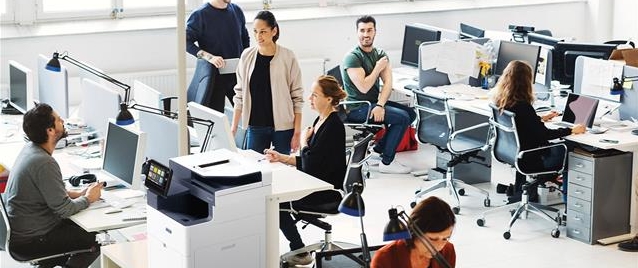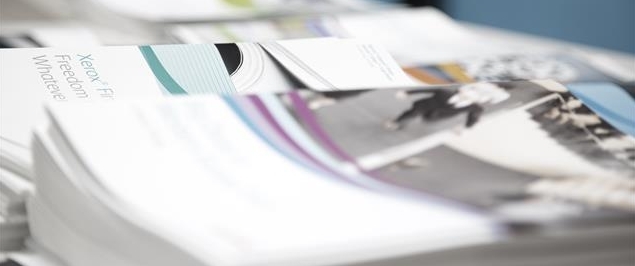Dots per inch, pixels per inch, halftone, line screen… Can’t I just get a decent print?
Getting good print quality from your office printer or multifunction printer (MFP) is influenced by more than those simple specifications you see on a brochure. Many factors impact print quality and one of these is the paper you print on.
The quality of paper plays a significant role in getting great looking output. For example, a file printed on 20lb bond paper with a brightness rating of 90 won’t look as good as the same file printed on 24lb bond paper with a brightness rating of 98. Recycled paper can cause print quality woes as well, so it’s important to choose the right paper for the right job. Draft work intended for internal audiences is a great time to use lower quality paper. However, when printing that proposal to submit to a potential client, selecting a good quality paper will ensure your document has the professional edge it deserves.
But choosing the right paper can be confusing. Different paper weights and coatings as well as whether it was designed for an inkjet or laser printers will have an impact on print quality. It’s important to follow the guidelines recommended for your printer or MFP, but a good rule of thumb is to use paper intended for the technology you are using (i.e. inkjet or laser). This will ensure that the paper meets the minimum weight requirements for feeding from the paper tray.
 The finish of the paper is also important to consider. Paper finish refers to the surface characteristics of the paper. Different finishes provide varying degrees of smoothness, and ink and toner receptivity. Higher grade papers typically offer a smooth finish, which you can actually feel. Lower grade papers will feel rough to the touch and typically don’t provide the best looking prints as it is harder for the ink to absorb and toner to fuse to the paper.
The finish of the paper is also important to consider. Paper finish refers to the surface characteristics of the paper. Different finishes provide varying degrees of smoothness, and ink and toner receptivity. Higher grade papers typically offer a smooth finish, which you can actually feel. Lower grade papers will feel rough to the touch and typically don’t provide the best looking prints as it is harder for the ink to absorb and toner to fuse to the paper.
Specialty media, such as glossy paper or card stock, can add an edge to your brochures, flyers and photos, but you want to ensure your printer or MFP can handle this type of media. The product specifications include this information. Many printers and multifunction printers will require specialty papers to be fed from the manual tray, be sure to follow the proper loading procedures when using these media.
Do you have questions or tips on how to get the best looking prints? Share them here, and in the meantime, stay tuned for the next installment on print quality!


